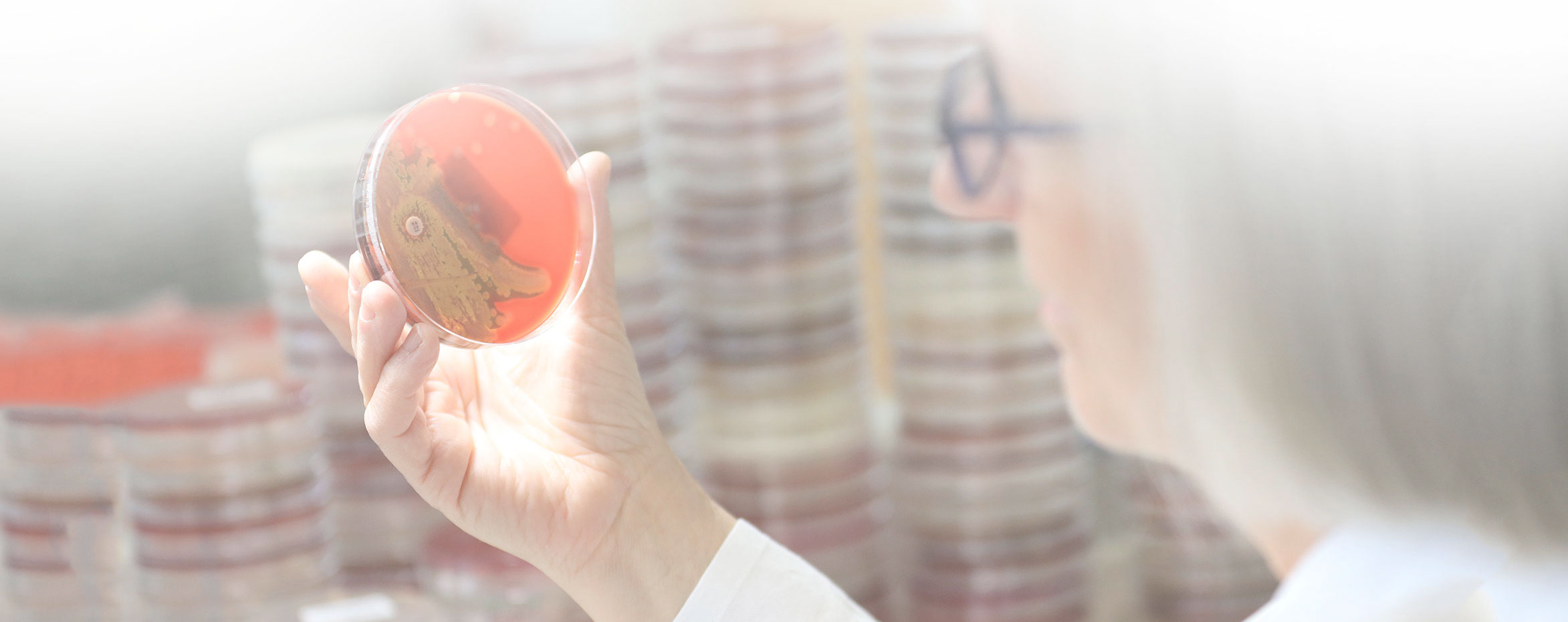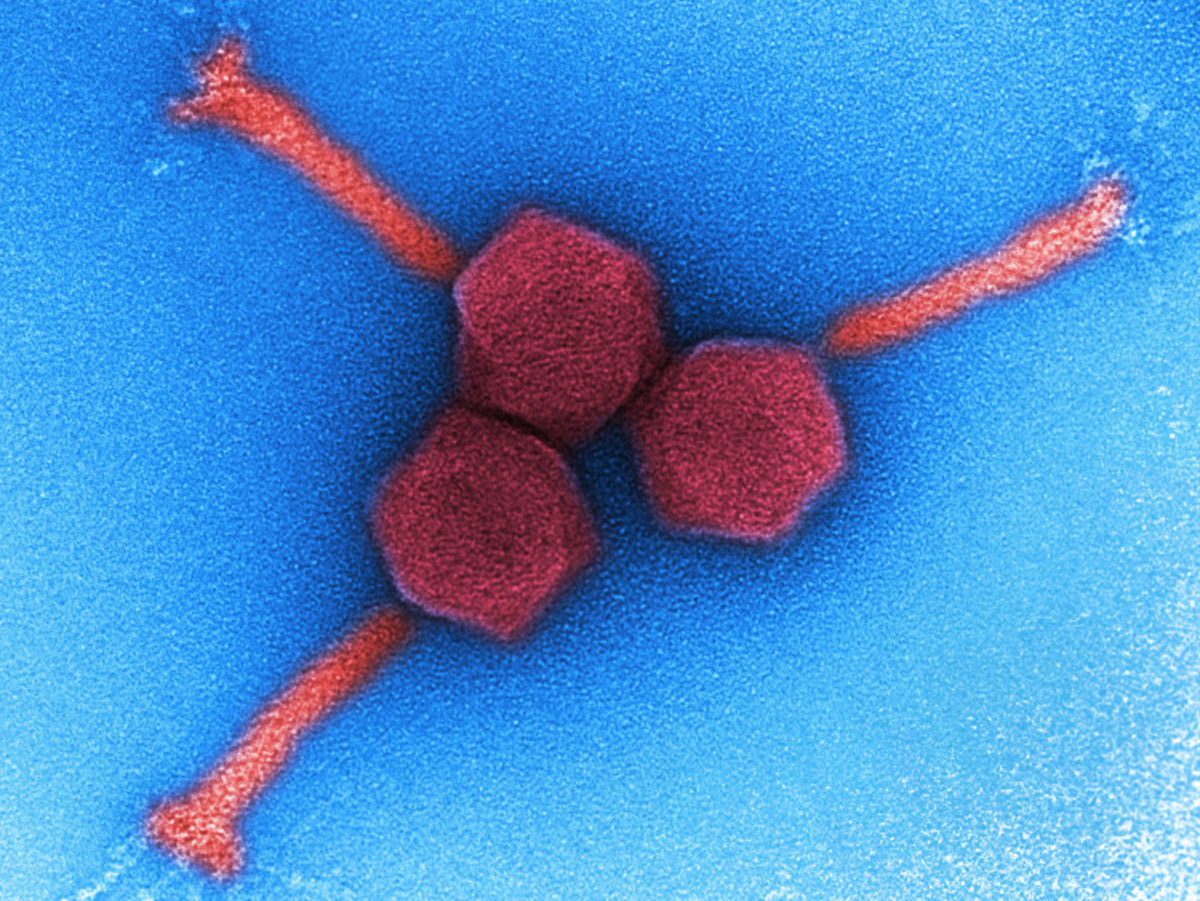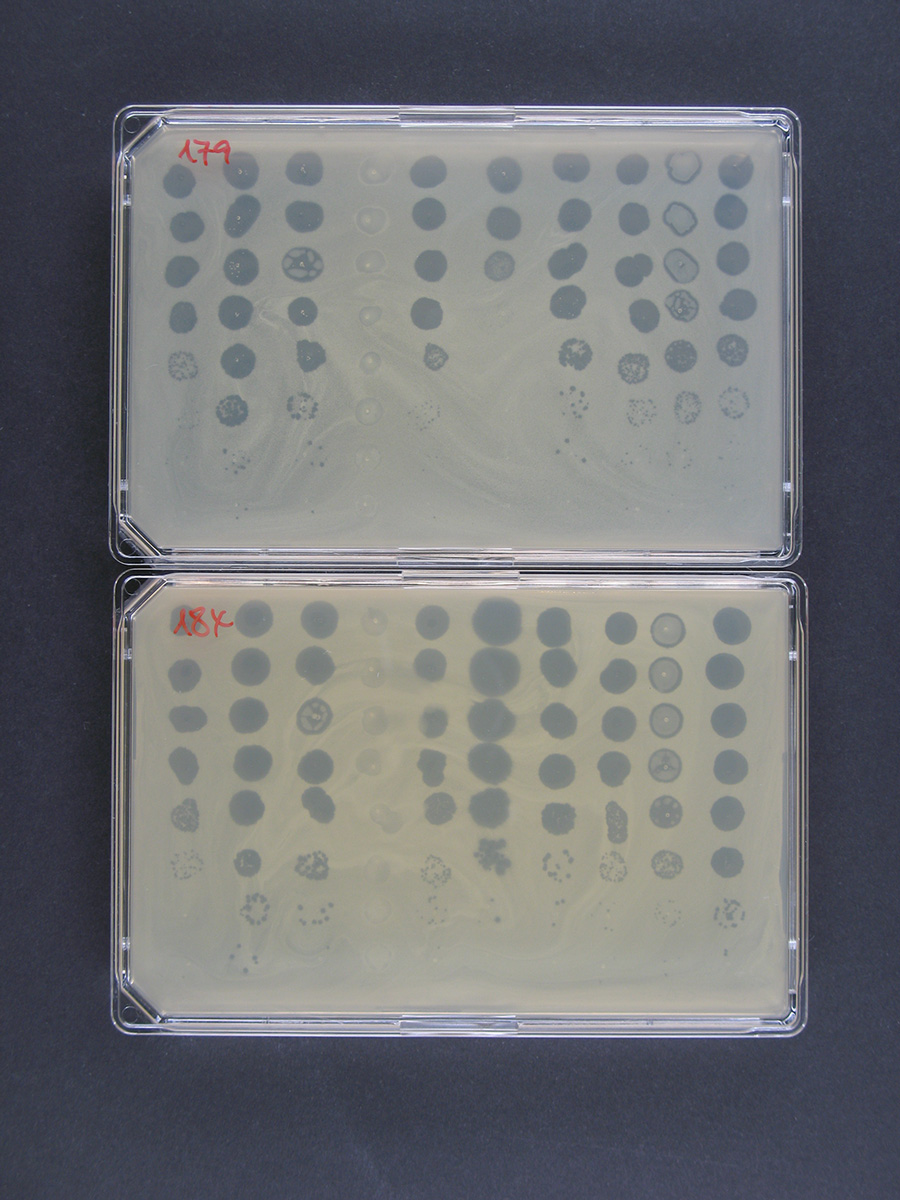Bacteriophages (Greek: “bacteria eaters”, short: phages) are viruses that are specialized in infecting bacterial cells, multiplying in them and destroying them in the lytic process. When this happens, a complicated process takes place: the phage recognises the bacterial cell by its surface structures (receptors), adsorbs firmly to the cell with its tail fibres, injects its genetic material out from its head (capsid) through its tail into the cell and induces it to gradually produce new phage particles. This process is controlled by enzymes and an interaction of bacterial and phage genes. Enzymes are also involved in the release of the new phage generation (lysis) from the cell, the cell bursts. The receptors of the bacterial cells that can be recognized by phages are biochemically or structurally different. Phage tail fibres and bacterial receptors must fit like keys and locks, so that phages “work” and can kill the suitable bacteria by lysis.




